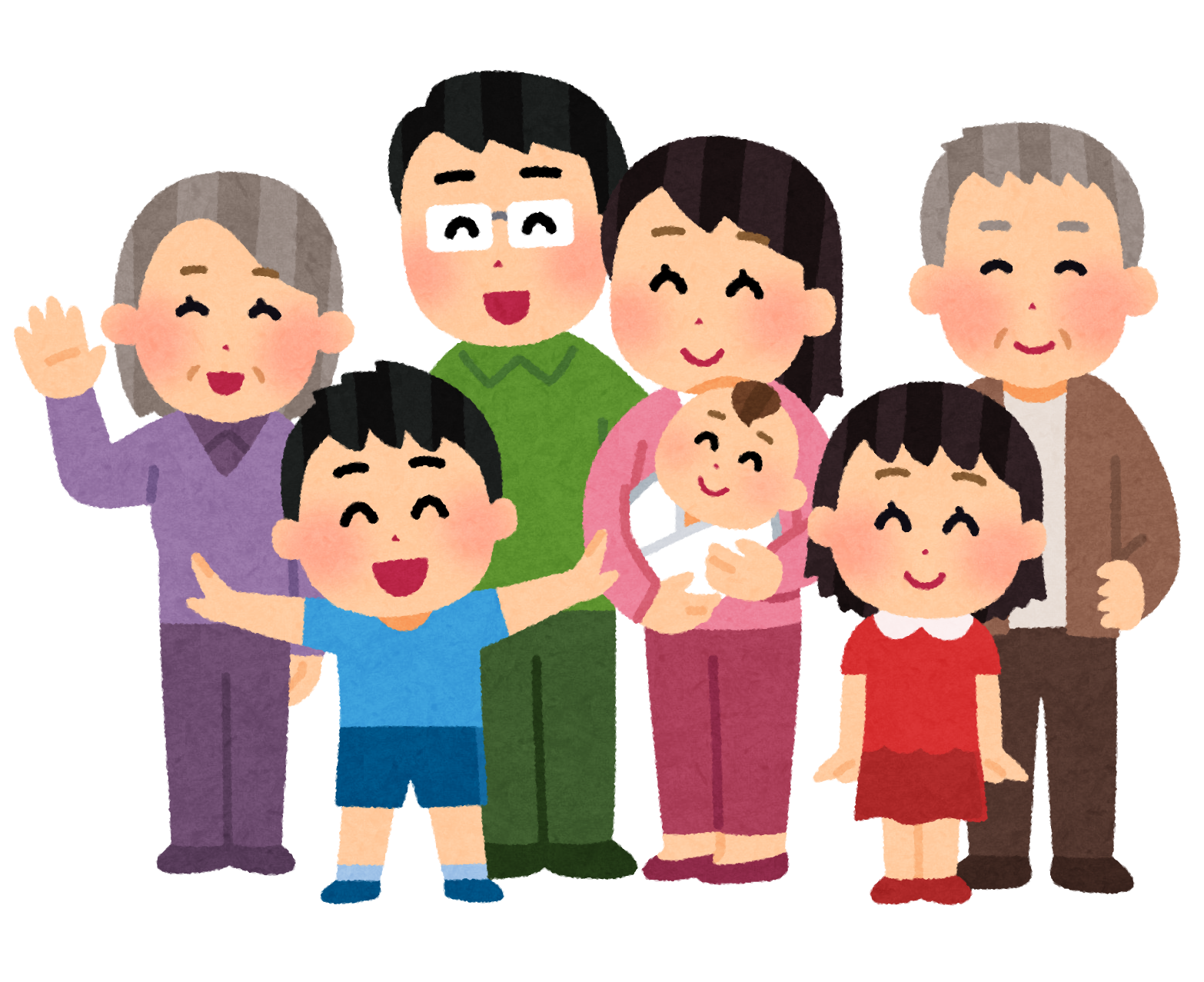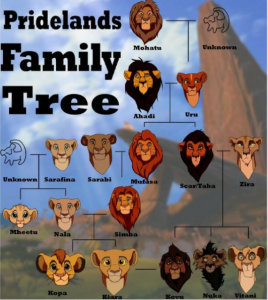Japanese Level 2, Activity #4: “Family Tree” / “家系図” (Online)

Image via Irasutoya
Description:
Students will be talking about their families, as well as other well-known families. They will be able to describe the characteristics of someone in their family and practice using numbers to describe age and birthdays.
Semantic Topics:
Japanese, Family, Birthdays, Family Tree, Numbers, 日本語, 家族, 誕生日, 家系図, 数字
Products: People Counter, Family Descriptors
Practices: Talking about age, Talking about one’s family
Perspectives: The importance of Family in Japan
NCSSFL-ACTFL World-Readiness Standards:
- Standard 1.1: Students engage in conversation, provide and obtain information, express feelings and emotions, and exchange opinions.
- Standard 1.2: Students understand and interpret written and spoken Japanese on a variety of topics.
Idaho Content Standards for World Languages:
- COMM 1: Interact with others in the target language and gain meaning from interactions in the target language.
NCSSFL-ACTFL Can-Do Statements:
- I can ask and answer questions about the members of my family and ask about someone else’s family.
- I can describe the characteristics of someone.
- I can use numbers to count people and describe birthdays.
Materials Needed
Warm-Up:
Have the students identify the various members of the family trees that will be provided.
生徒に、提供される家系図のさまざまなメンバーを特定してもらいます。

Main Activity:
Slide 4: Main Activity: Making Family Trees
Slide 5: Counting people song!
- 家系図作り
- 人をかぞえるためにこのうたをうたってみなさい
- すうしのれんしゅう
- ひとり、ふたり、さんにん、 いるよよんにん、ごにん、ろくにん、いるよ
- しちにん、はちにん、きゅうにん、いるよ
- たくさんなにほんじん
- 一人、二人、三人、いるよ四人,五人、六人、いるよ
- 七人、八人、九人、いるよ
- たくさんな日本人
Slide 6: Vocabulary review
- 家系図作り
- 覚えなさい:つかうことばは自分の家族とだれかの家族について話すかどうかじだいです
- たんごれんしゅう
- 母(はは・おかあさん)
- 父(ちち・おとうさん)
- あね・おねえさん
- あに・おにいさん
- いもうと
- おとうと
- そふ・おじいさん
- そぼ・おばあさん
Slide 7: Instructions and Preperations
Read the instructions to the students and check for comprehension
Scaffold the activity using your own family tree to describe answers to the interview questions
- 例えば
- 私の家族は四人家族です
- 私の誕生日は千九百九十八年七月二十五日です
- 私の母は強いです。
If there is an odd number of students the facilitator should pair up with one of the students, aim to pair up with students that seem nervous or might need the extra help
ファシリテーターが生徒の1人とペアを組む必要がある生徒の数が奇数の場合は、緊張していると思われる生徒や追加の支援が必要な生徒とペアを組むことを目指します。
Then have the students pair up (and if it’s a large group send them to breakout rooms) and they will “interview” each other to make family trees for their partner. When they are done they will present their trees to the rest of the group.
次に、生徒をペアにして(大規模なグループの場合は小会議室に送ります)、お互いに「面接」して、パートナーの家系図を作成します。それらが完了すると、彼らはグループの残りの人に彼らの木を提示します。
Wrap Up:
If time and student vitality allow, have them go one step further and have them describe their family members as well.
時間と生徒の活力が許せば、さらに一歩進んで家族についても説明してもらいます。
End of Activity:
- Read Can-Do statements once more and have students evaluate
their confidence.
(Use thumbs up/thumbs down or download our student cards.) - Encourage students to be honest in their self-evaluation.
- Pay attention, and try to use feedback for future activities!
NCSSFL-ACTFL Can-Do Statements:
- I can ask and answer questions about the members of my family and ask about someone else’s family.
- I can describe the characteristics of someone.
- I can use numbers to count people and describe birthdays.

